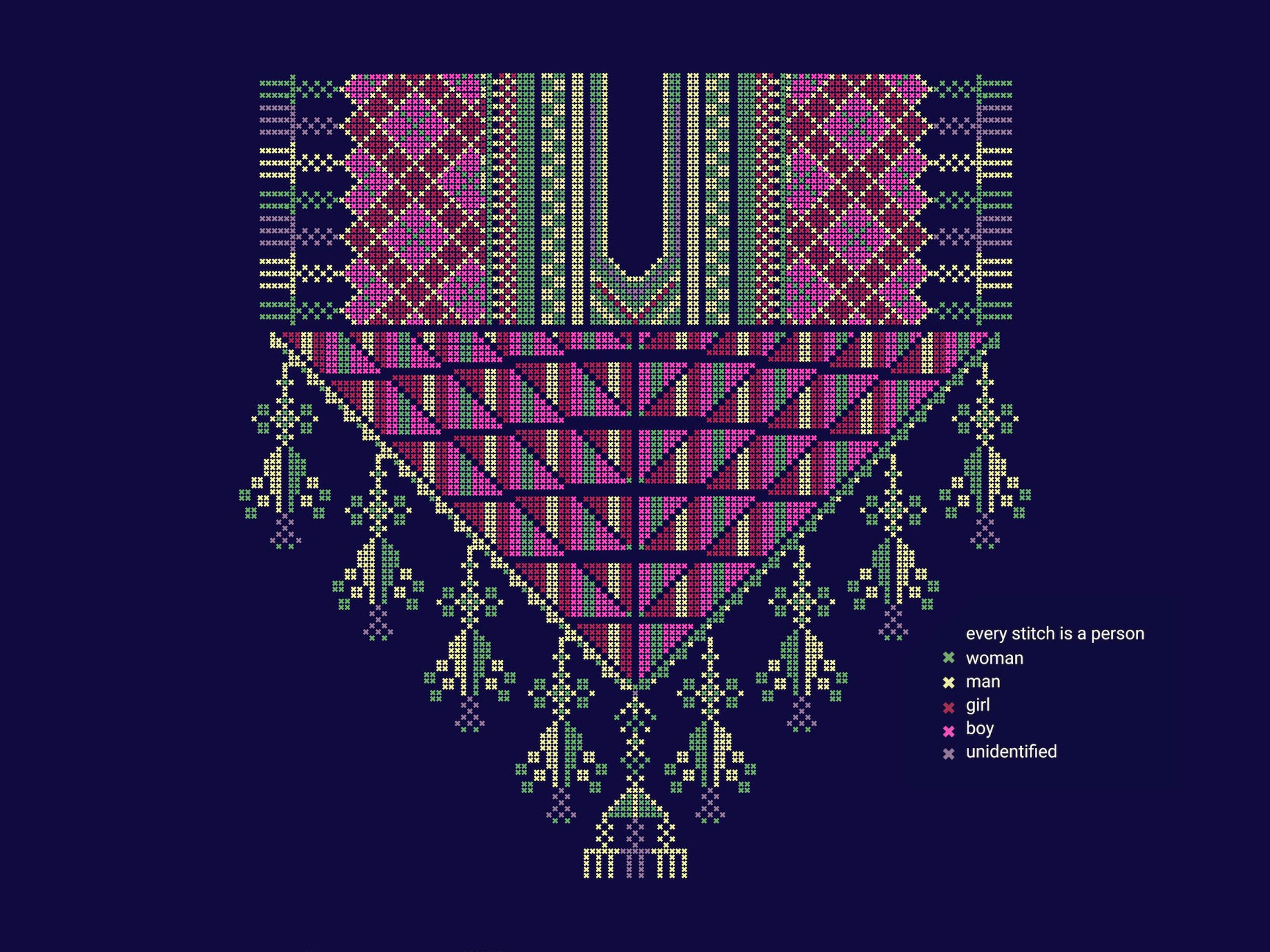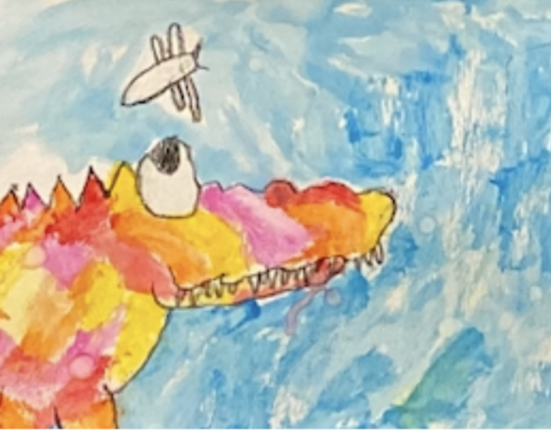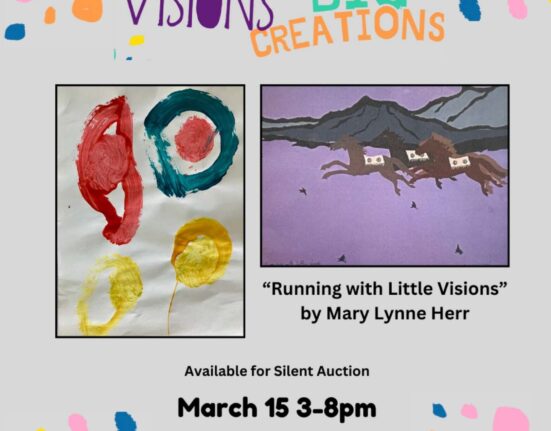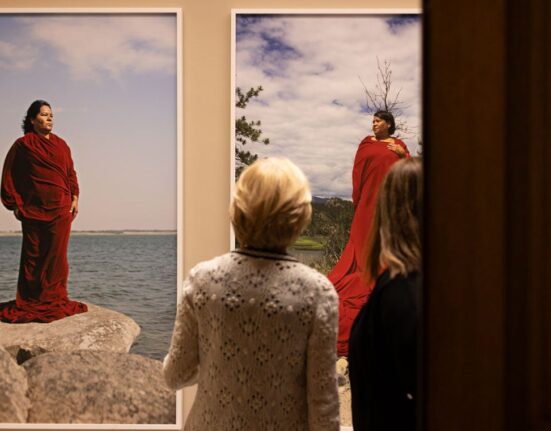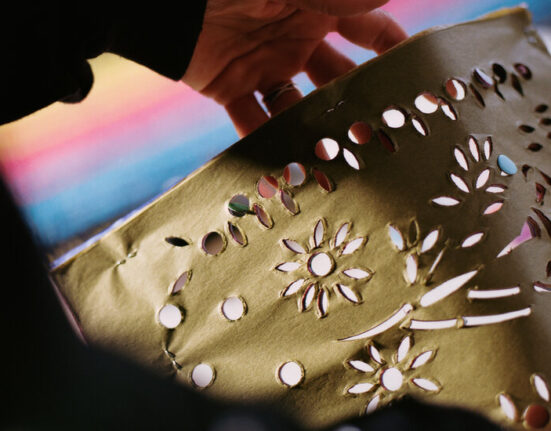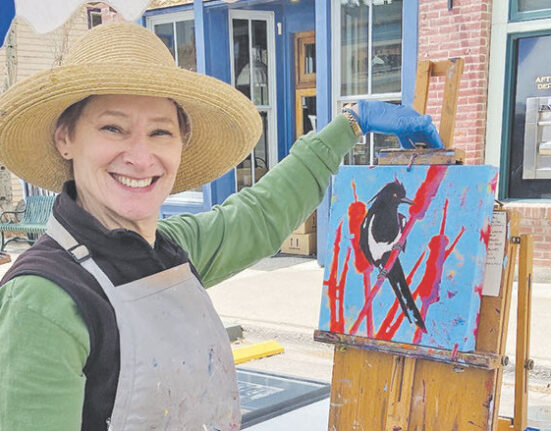
Palestinian cross-stitch embroidery known as taṭrīz has long been a medium for storytelling. Now, a London-based artist is using the traditional craft to digitally visualize the death toll in Gaza under Israel’s bombardment of the Palestinian enclave over the last three weeks.
Maya Amer, a Palestinian motion graphics designer and illustrator, shared a moving animation on social media in which over 8,000 multicolored stitches represent children, adults, and unidentified people reportedly killed by Israeli forces in the Gaza Strip since the Hamas attacks on October 7.
“These are little boys and girls; these are men and women, and these are bodies so maimed no one recognized them,” a text in the video reads. “Remember us as people of culture and history. Remember us as people with names and families.”

As of November 1, the Gaza Health Ministry reports that Israel’s relentless airstrikes and deadly siege have killed more than 8,500 people living in the region, as well as internally displaced an estimated 1.4 million people. Another 2,000 people are reported missing, presumably caught under the rubble of destroyed buildings and infrastructure. The United Nations Office for the Coordination of Humanitarian Affairs (OCHA) also reports that Israeli forces and settlers have killed 123 Palestinians, including 34 children, living in the West Bank. The Hamas militant group reportedly killed over 1,300 Israelis and took at least 200 people hostage in its attack on October 7.
Amer told Hyperallergic that growing up, she would watch her grandmother and aunts practice the ancient cross-stitch, like many other Palestinian women have done for centuries.
Although she said she doesn’t personally embroider — she said she lacks the patience — she found taṭrīz to be a helpful tool to unpack numbers that are sometimes difficult to visualize, like the mounting death count in Gaza. The pattern she used for her motion graphic, she said, was inspired after visiting a traditional Palestinian embroidery and textile exhibit in Cambridge, United Kingdom.
“The pattern I worked on is one from Gaza,” Amer explained, adding that the chest panel “necklace” design was frequently featured on traditional Palestinian dresses (thobes) in lieu of jewelry. In addition to thobes, the embroidery was also frequently used on handkerchiefs, pillow covers, and other decorative objects.
For those interested in trying their hand at the intricate embroidery, Amer also shared a link to the pattern.
“I wish I could do more as an illustrator, but I’ve seen people make great visuals to represent abstract terms we have trouble grasping, and making things visual can really get the message through and be memorable,” Amer said.
“If I can say something to anyone in a creative field of any kind, it’s to use your platform to educate people and spread facts,” Amer continued. “It’s a great way to document these unimaginable events for years to come so we never forget.”

